Artnet News Pro
Vienna Contemporary Has Relaunched Itself as a Boutique-Sized Art Fair in a Former Post Office
The fair is moulding itself against a changing landscape in Austria's art world.
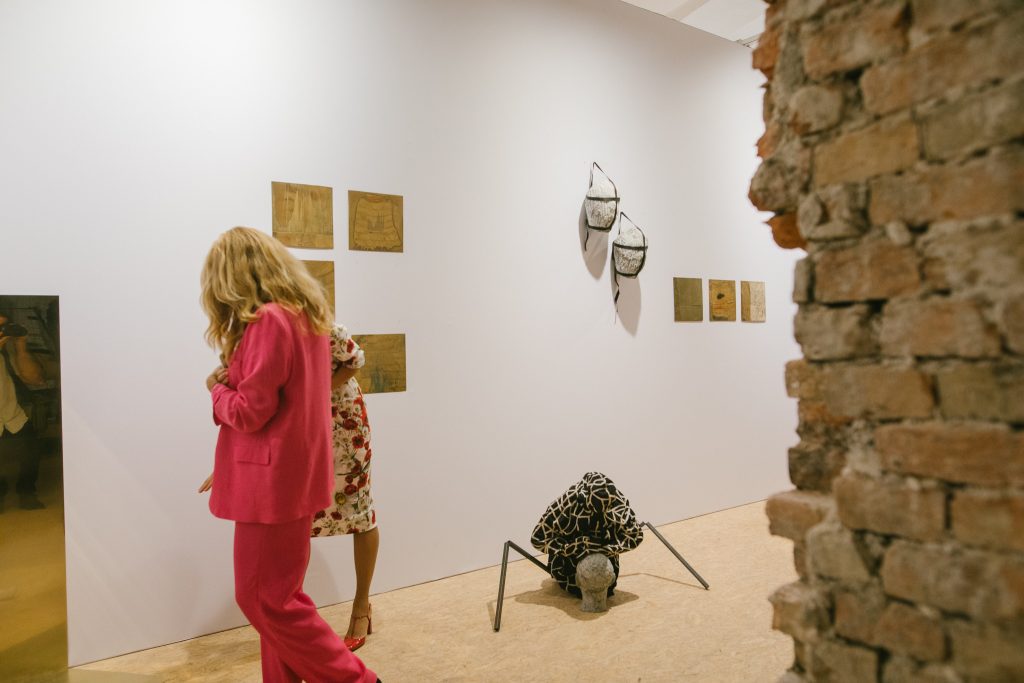
The fair is moulding itself against a changing landscape in Austria's art world.

Hili Perlson

“We’re here to stay,” declared Russian businessman Dmitry Aksenov, who is also Vienna Contemporary’s chair, when he greeted press at the fair’s packed opening day. The loaded statement spoke volumes of the turmoil and uncertainty that has surrounded the fair since its 2020 edition: Though it was one of the few in-person events to succeed at taking place between surges of the COVID-19 pandemic in Europe, the fair found itself without an artistic director, location, or fixed dates this summer.
In fact, it wasn’t until August—just one month before opening—that the fair was ready to publicly announce it would take place at all. But it managed to get all the missing pieces in place, and opened last weekend in a historic location in Vienna’s center from September 2 through 5.
Could all the turbulence be chalked up to a “new normal,” to a settled reality where large art events must be flexible up to the last minute and ready to adjust in our pandemic era? Yes, but that is not the only disruptive factor. This past June, the Austrian capital saw the new fair Spark added to its schedule, which was launched by none other than Vienna Contemporary’s former managing director Renger van den Heuvel. The rival fair took place at the historic Marx-Halle, a well-known venue that had been Vienna Contemporary’s impressive location since 2015.
While many are still speculating whether or not Vienna’s art scene is able to attract collectors twice a year in summer and fall, one thing is clear: Both fairs certainly have to carve out their separate identities in a rapidly changing art industry.
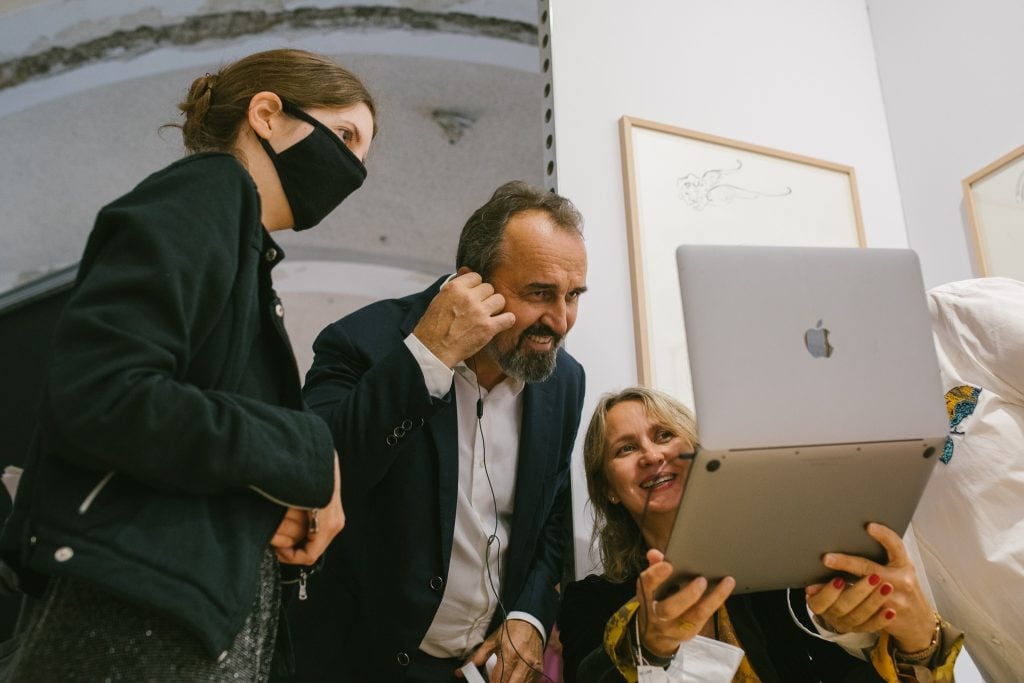
View of Vienna Contemporary. Photo: Niko Havranek.
The more veteran Vienna Contemporary’s out-of-the-box solution was to partner up with the historic Neue Alte Post, a buzzy new venture in the former post office in the city center, which was reportedly bought in 2018 for over €115 million ($136 million) by SAP founder and billionaire collector Hasso Plattner. Once finished, the refurbished 40,000-square-meter (430,560-square-foot) edifice would boast luxury rentals, a hotel, and a culture center—but, for the moment, it is still very much a construction site.
The fair’s well-heeled guests found themselves squeezing through provisional pathways into dusty corridors to visit the fair’s much-reduced format of only 25 galleries (compared to 110 in 2019 and 65 in 2020) as drilling and hammering reverberated through the building and workers in hard hats scurried by.
“Please see this as an experiment,” the fair’s very new artistic director Boris Ondeička told the press. “As you know experiments are challenges without clear results.”
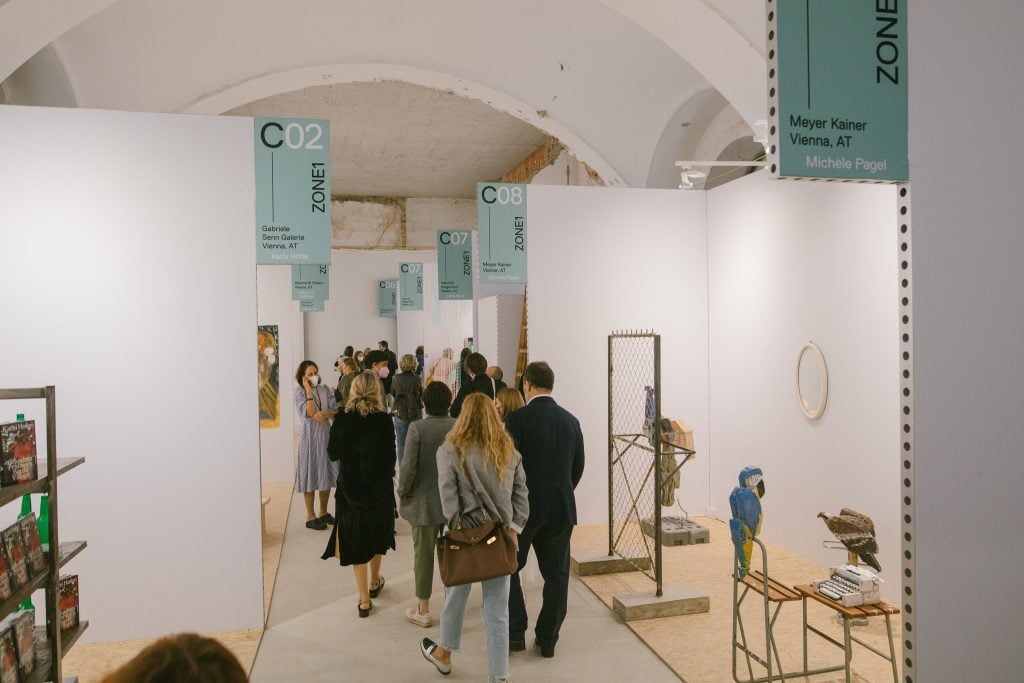
View of Vienna Contemporary. Photo: Niko Havranek.
Yet, somehow, none of this encumbered the spending mood. The Salzburg-based gallery Elektrohalle Rohmberg, who showed oil paintings by Japanese artist Haruko Maeda, sold out on opening day, with most works going to Bulgarian collectors with prices ranging from a few thousand euros to €18,000 ($21,352).
Lublijana’s Galeria Fotografia also sold out its booth of moderately-priced works by Boris Gaberščik, which were shown alongside Lucija Rosc, juxtaposing two generations of Slovene photographers, with works ranging between €450 and €3,300 ($533 to $3,914). “We’re going to Unseen in Amsterdam after this, and then to Photo Basel,” said the gallery’s Hana Čeferin. “There’s a sense of panic to do everything you’ve missed out on.”
It was Prague-based dealer Alexandra Karpuchina’s second participation at the fair after a successful run last year, when the gallery managed to reach American collectors for the first time. And though those clients certainly weren’t going to make it this fall, the gallery sold most of its booth of paintings by Julius Reichel—all for €2,500 ($2,966)—and Matyáš Maláč, priced at a maximum of €4,200 ($4,984).
While overall, Vienna Contemporary’s focus has been on Central and Eastern European galleries, Dublin’s Green on Red Gallery was in attendance for its third time, after a Viennese collector suggested they try out the fair in 2019. Packed with large scale pieces by five different artists, their booth included works by Alan Buter, who is showing at the Irish Pavilion at the Architecture Biennial in Venice this year; the gallery is also bringing Buter’s works to the Armory Show in New York next week. They were snagged by Bulgarian collectors for prices between €2,750 ($3,263) and €6,000 ($7120).
Another major change is that Vienna Contemporary is in the process of becoming a registered nonprofit, a strategic if controversial move that would allow it to receive public funding. “You don’t do an art fair to make money,” said Markus Huber, the fair’s new managing director.
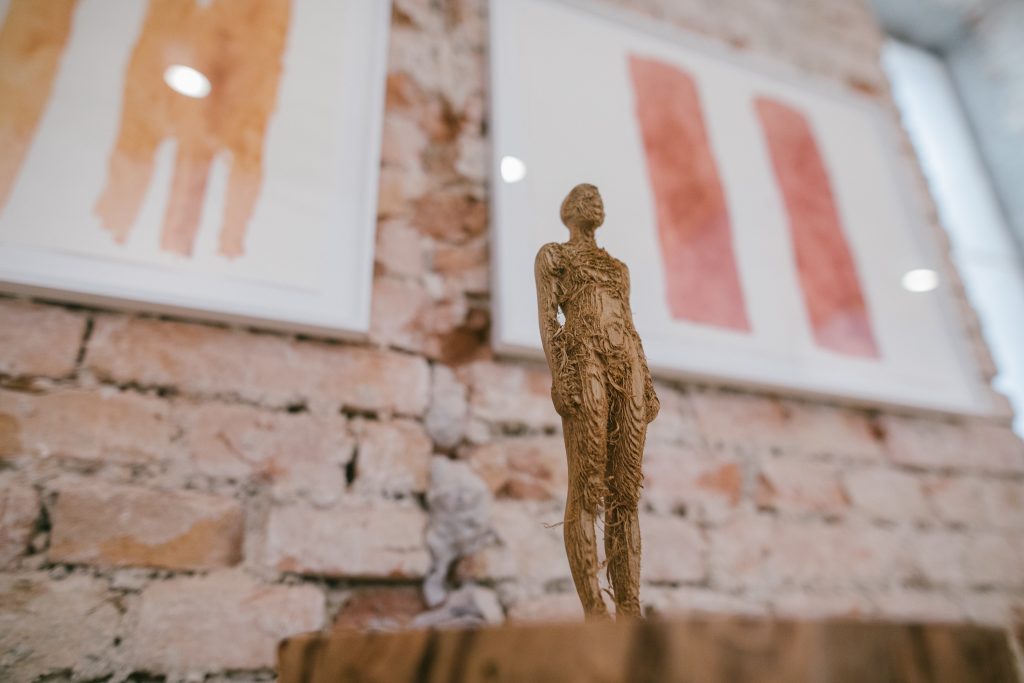
View of Vienna Contemporary. Photo: Niko Havranek.
Only a modest seven Viennese galleries participated, compared to 37 in 2019, and were presented in a separate, government-supported section, curated by Franziska Sophie Wildförster, who is a cofounder of Vienna’s Kevin Space kunstverein, and a former curatorial resident at Ludlow 38. With only six weeks’ notice that the fair was actually going to take place, most local dealers weren’t able to plan booths in addition to the shows they were already staging as part of the city’s Curated By festival. Rather than compete, the two events aligned dates and joined forces, to some extent.
Now in its 13th iteration, curated by has become one of the shiniest dates on the city’s agenda, in which international curators and critics are invited by gallerists to put up exhibitions in their spaces. (It too is publicly funded.) The fair offered guided tours of the galleries participating at Curated By, and organized visits to an additional list of Viennese galleries under the title “Invited by.”
For Vienna, where any spirit of collaboration usually leaves much to be desired, this is no small feat. The fair’s new artistic director Ondeička likened its last-minute format to a node, attracting visitors and radiating into the city. “It’s time to reconsider who we are and who we want to be,” he said.
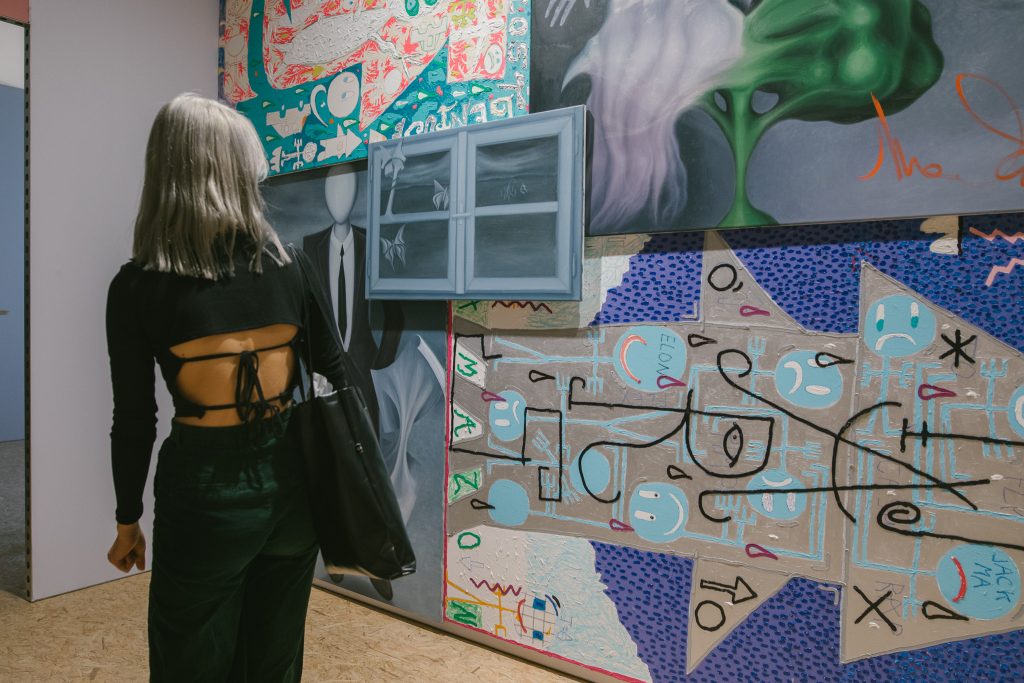
View of Vienna Contemporary. Photo: Niko Havranek.
For this edition of curated by, centered around the theme of comedy, galleries invited well-connected art world fixtures to organize exhibitions, such as Geneva-based curator Andrea Bellini (at Christine König), Swiss curator and advisor Nicolas Trembly (at Croy Nielsen), or German critic and curator Jörg Heiser (at Senn). A younger generation of artists and curators was represented as well, including Studio for Propositional Cinema, the Performance Agency, and Cindy Sissokho, who curated exhibitions at Layr, Zeller van Almsick, and Exile Gallery, respectively.
The experimental location and mood of collaboration seemed to have carried this edition through, but whether it will continue to preside over the fair landscape in Vienna remains to be seen. There were promising signs: Dealer, advisor, and curator Stephan Stoyanov, who curated a highlight of a group show at Mario Mauroner Contemporary Art as part of Curated By, was also on a buying spree at the fair’s opening day. In 2009, Stoyanov was one of the first dealers to move his now-defunct gallery LUXE to the Lower East Side, so it comes as no surprise that he appreciated Vienna Contemporary’s alternative location. “Contemporary art is for the bold!” he told Artnet News, rushing down the aisle to make another purchase.